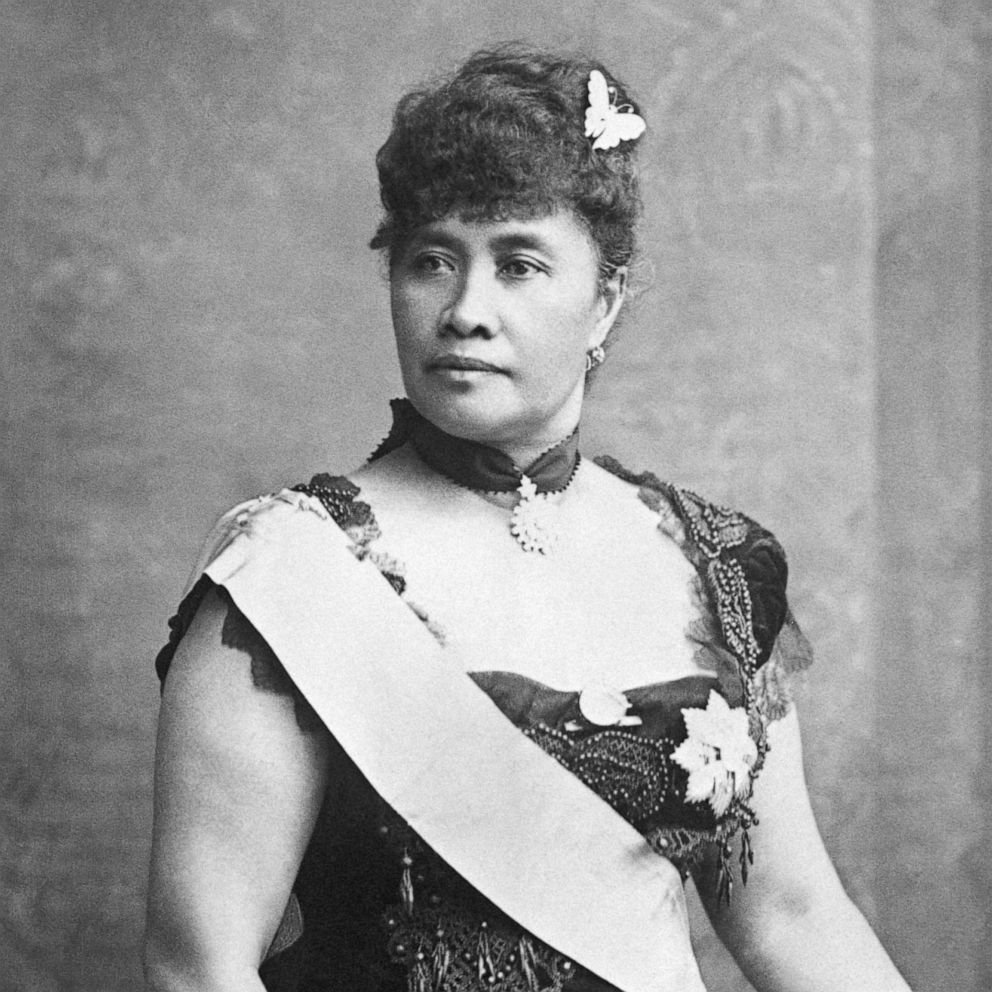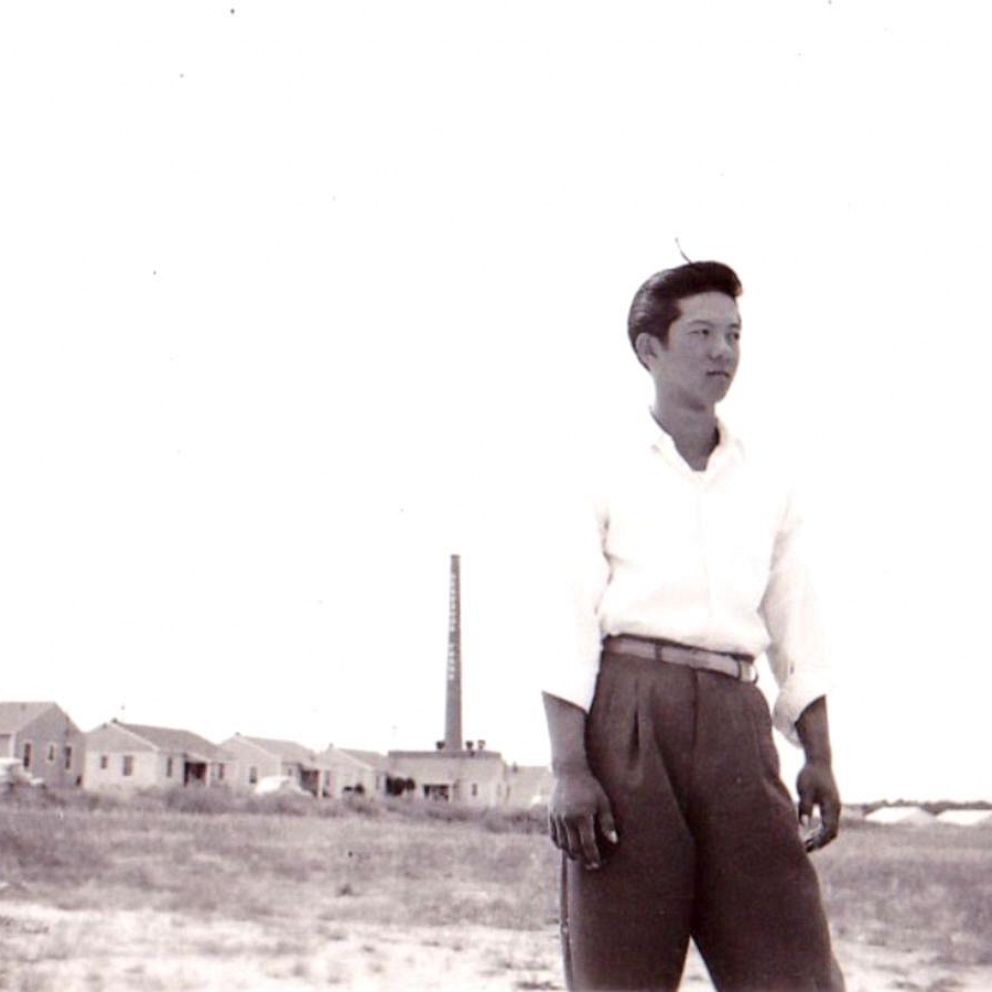After Japanese American incarceration 80 years ago, 1 woman keeps her family's story alive
Caitlin Oiye Coon works to save her own and thousands of families' stories.
As a teenager, Caitlin Oiye Coon would hear stories from her grandmother Shizuko Kikuchi Oiye about what life was like for their family as Japanese Americans incarcerated at Tule Lake, one of 10 War Relocation Centers opened by the federal government during World War II.
Coon now works on preserving her family's and others' stories as the archives director of Densho, a nonprofit dedicated to educating, digitizing and passing down artifacts and stories about the incarceration of Japanese Americans from 1942 to 1946.
"They never hid the fact that it was a bad experience," Coon, 43, told "Good Morning America." "The stories that my grandma would tell were not fun, happy stories."

Coon has combined her personal family history with her life's work for Densho, working to digitize family stories and relics.
"We can't move forward if we don't understand what happened in the past," Coon said of why she's so drawn to the work of preservation.
"I think we can honestly have a deeper connection to each other in knowing about our shared past," Coon added. "We've preserved all of this primary source material and these firsthand accounts. You listen to them and you make your own decisions within the context of the history."

During the height of World War II, nearly 30,000 were incarcerated or segregated at Tule Lake, making it the largest of the WRA camps, according to the National Park Service. Overall, approximately 120,000 Japanese Americans were uprooted from their homes along the West Coast, separated from society and sent to a WRA camp.
The camps, previously known as internment camps, are now referred to as incarceration camps because the majority of Japanese Americans sent to the camps were American citizens who were incarcerated, instead of non-citizen "enemy aliens" who were interned.

In the eight decades since the second World War, Japanese American families have pushed to shine a light on the dark history behind the incarceration of Japanese Americans in the 1940s.
Tule Lake: 'The camp for troublemakers'
Coon's grandparents were incarcerated at Tule Lake Segregation Camp from 1942 to 1946, the most notable years of the U.S. involvement in the war in Europe and the Pacific.

In 1943, the War Relocation Authority distributed a questionnaire to Japanese Americans designed to identify these citizens' loyalty to the United States in wartime. Of significant impact was the manner in which respondents answered questions 27 and 28 on the questionnaire, which asked about one's loyalty to Japan and willingness to serve the United States.

According to Densho, Tule Lake was set up to hold Japanese Americans, like Coon's grandparents, who answered "no-no" to the loyalty questionnaire.
"It was always just kind of known as … the camp for troublemakers. Some people were embarrassed post-camp about being in Tule Lake because it had this negative connotation within the community for a really long time," said Coon of the reputation of Tule Lake.
Tule Lake experienced a high amount of unrest compared to other camps. In November 1943, after a period of unrest, martial law was declared at the camp with prisoner curfews, searches and a stockade built at the camp, according to Densho.
The impact of incarceration
Coon recalls hearing about her grandparents' and their peers' struggle to hold on to any semblance of Japanese culture while in incarceration.

"They lost a lot of their Japanese identity and their Japanese cultural traditions as they went into camps," Coon said. She explained that her grandparents, part of a kibei generation of Japanese Americans who went back to Japan for education and then returned to the U.S., lost a significant part of their cultural heritage and what they were able to hold on to seemed to take on an Americanized version of the original culture.
Of the few family heirlooms that have been passed down in Coon's family is her grandmother's obi.


The obi, a fabric sash that's a common component to Japanese wedding outfits, was passed down for generations in Coon's family. The sash, which Coon believes her grandmother Shizuko Kikuchi Oiye wore at her wedding in Japan, survived incarceration at Tule Lake and was kept in safekeeping by her grandparents.

"It is a reminder of her and the many trials and joys she experienced in her life," Coon wrote in a Densho article highlighting the obi.
"The obi links us to our Japanese ancestors even when our ties to them have stretched thin," Coon added.

In recognition of the heirloom and everything it represents, Coon keeps a tattoo of one of the Mandarin ducks from the obi on her arm.
The incarceration of Japanese Americans forever altered the trajectory of Coon's family and their shared history.
"I like to think if the incarceration hadn't happened, my dad, probably his connection to Japan would be stronger. They might have grown up in a dual language household. They may have visited their family in Japan. They might have a relationship with that family in Japan that still exists," Coon said.
Tule Lake, 80 years later
Since the 1970s to the present day, Japanese American families have been going on pilgrimages to the WRA incarceration camps, which were often surrounded by barbed wire and guard towers. They include Tule Lake and Manzanar in California; Minidoka in Idaho; Gila River and Poston in Arizona; Topaz in Utah; Heart Mountain in Wyoming; Amache/Granada in Colorado; and Jerome and Rohwer in Arkansas.
"All of the camps are by nature, in really remote places where there isn't a lot there even now, for obvious reasons," Coon explained.
Coon has gone on pilgrimages with her family to Tule Lake, group trips that she describes as both emotional and rewarding.
"There's usually crying and just big feelings and a lot of things come to the surface," Coon recounted. "There's a lot of people who attend pilgrimages who live not on the West Coast so their Japanese American community isn't as strong there and so this might be the first time they're really experiencing that with other Japanese Americans and getting in touch with that part of their history."
"There's not many buildings left and you can't get an idea of the scope but when you're there with a pilgrimage, there's a lot of educational pieces that happen at the same time, which kind of helps you to understand what's happening and what the site used to be," she added.
Preserving the past to inform the future

Coon said keeping the history of Japanese American incarceration alive, like those of countless Japanese American families' personal stories, can serve as a crucial reminder to not repeat the mistakes of the past.
"I like to think that we don't need to worry about things like the incarceration happening again because we've learned our lesson and we wouldn't ever do that. But then events happen and it gets brought up again and we have to once again remind people, this is the actual, real world result of what you're saying," Coon said.
"We all have different backgrounds and different experiences and the more stories we can share, I think the better," she added.

